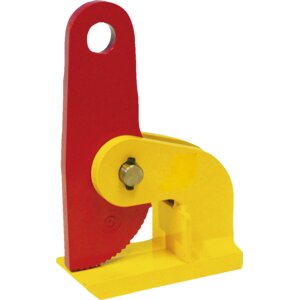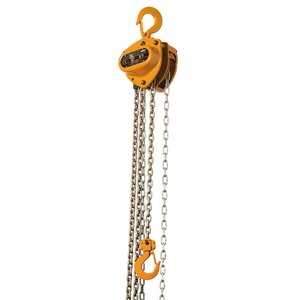I – DIRECTIVES
Directive 2006/42/EC stipulates the following : :
Machinery presenting risks due to lifting operations, mainly risks of falling loads, bumping or rolling over because of load handling must be designed and constructed in such a way to meet the essential health and safety requirements defined in the Directive.
Within the specific framework of the essential requirements relating to mechanical strength, it is defined that :
Machinery and lifting accessories and removable elements must be able to resist the constraints to which they are subjected in service and, when necessary, out of service, in the conditions of installation and operation specified by the manufacturer and in all relevant configurations, taking account, when necessary, the effects of atmospheric factors and the forces applied by persons. This requirement must also be met during transport, assembly and disassembly.
Machinery and lifting accessories must be designed and manufactured to avoid failure due to fatigue or wear, taking account of their intended use.
The materials used must be chosen taking into account the environments of use stipulated by the manufacturer, in particular for corrosion, abrasion and impact.
II – FRENCH REGULATIONS
The decree of 1 March 2004 establishes the conditions for the inspection of working equipment used for lifting loads, to which the director of the establishment where this working equipment is put into service or used is subject.
For example, the following lifting devices are concerned: winches, hoists, jacks, overhead cranes, cranes, jib cranes, lifting tables.
They are subject to the following inspections.
Inspections during putting into service stipulated in article R233-11-1 of the labour code
New lifting devices and, when necessary, their supports, must be submitted to a suitability test, to an assembly and installation test (for those permanently installed), to a static test and a dynamic test (except for those directly moved by human force).
Nota 1 :
The suitability test of a lifting device is the test that consists of :
a) verifying that it is appropriate to the work the user intends to do and to the risks workers are exposed to,
b) to ensure that the intended operations are compatible with the conditions of use of the device as defined by the manufacturer.
Nota 2 :
Assembly and installation tests consist of ensuring that it is safely assembled and installed in accordance with the manufacturer's instructions.
Nota 3 :
Static test means the test which consists in making the lifting device, equipped with all its accessories, and its supports bear the maximum working load, multiplied by the static test coefficient, without moving it for a given period. The conditions of the static test, the time of the test and the test coefficient are those defined by the manufacturer's instructions, or those defined by the regulations applied at the time of the design of the device. Otherwise, the coefficient is equal to 1.5 for lifting devices moved by human force directly and 1.25 for other lifting devices; in both cases the time of the test is one hour. During the test, the deflections and deformations taken or encountered by the various parts of the lifting device or its supports must be measured as required. At the end of the static test, the hoist and its supports must be inspected to ensure that no permanent deformation or defects have occurred.
Nota 4 :
Dynamic test means the test which consists in moving, with the lifting device, the maximum working load multiplied by the dynamic test coefficient in a way which brings the load into all the positions it can be moved into, without taking into account either the speed obtained or the heating of the device. Deflections and deformations due to the test will be measured as required. The conditions of the dynamic test and the test coefficient are those defined by the manufacturer's instruction manual, or those defined by the regulations applied at the time of the design of the device. Otherwise, the dynamic test coefficient is equal to 1.1.
Periodic general inspections required by Article R233-11 of the Labour Code
Lifting devices must be subject to a general inspection every twelve months. However, this periodicity is six months for devices, particularly those used on site, that are not permanently installed, that are subject to frequent movements, that do not require special tracks or supports and that are not dismantled and then reassembled.
Nota : other periodicity variants are defined for lifting devices that we do not sell, such as forklift trucks, devices for the transport of persons or the lifting of work stations. Please refer to the text of the decree of 1 March 2004.
This inspection includes :
- state of conservation inspection, the purpose is to check the good condition of the device and its supports and to detect any deterioration that could be the cause of dangerous situations.
- the test which consists in ensuring the effectiveness of the operation of a device (the brakes intended to stop and hold the load or device in all positions, the devices controlling the descent of loads and those limiting movements) and in activating, when they exist, the load limiters and rollover moment, to ensure that they operate correctly at less than 1.1 times the maximum working load.
Inspections when putting a lifting device back into service
Required by article R233-11-2, the inspection of lifting devices :
- in the case of a modification of the site of operation or the conditions of use on the same site,
- following disassembly followed by reassembly of the lifting device,
- after any replacement, repair or major transformation involving the essential parts of the lifting device,
- following any accident caused by the failure of an essential part of the device, shall include a suitability test, an inspection of the conditions, a static test and a dynamic test in accordance with the procedures set out in the above paragraphs. The lifting device and its supports must be subjected to the 2 tests without failure. Its operation, as well as the efficiency of the devices it contains, in particular the brakes and stroke limiters, must be entirely efficient. It must be the same with the load limiters and rolling moment, whose operating value must be checked at the end of the tests.
However, the following lifting devices are exempt from the tests, as long as they have been subject to a general periodic inspection in this configuration when they were put into service and for less than six months :
- lifting devices for loads moved by human force directly,
- lifting devices, especially for construction sites, not permanently installed, subject to frequent movement and not requiring the installation of special supports.
Nota :
Other variants of exclusions are defined for lifting devices that we do not sell. Please refer to the text of the decree of 1 March 2004.
WARNING : in accordance with article R233-11 of the Labour Code, the results of the inspections, tests and trials carried out during the various inspections must be recorded in the safety register provided by article L620-6 of the Labour Code.
III - ADVICE ON USE AND MAINTENANCE
PLEASE REFER TO THE USE AND MAINTENANCE MANUALS OF THE VARIOUS B
Consultez notre large gamme d'appareils de levage
Palans, palonniers, aimants de levage, treuils, vérins et biens d'autres appareils de levage sont disponibles sur notre site internet













